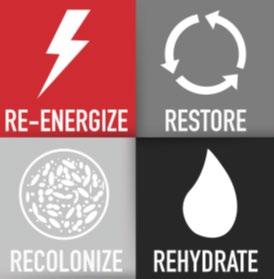
2 minute read
STRONG ION DIFFERENCE (SID
HYDRATION THERAPY Understanding Calf Electrolytes jILL STRANGSTALIEN Director of Herd Management Products and Solutions
“It’s an electrolyte. They all have to be the same.” A common thought many may have when choosing an electrolyte for calves. Unfortunately, it’s a misconception. One that can be very costly when taking into consideration how important hydration therapy is in the recovery process of an ailing calf. Research indicates that scours accounts for up to 75 percent of deaths in calves less than three weeks of age. Early identification and aggressive fluid therapy are critical in correcting the metabolic complications associated with diarrhea. Fluid imbalance can occur as a result of numerous instances in addition to scours, such as environmental changes, transport, crowding, temperature extremes, reduced feed intake, exposure to new animals, and management procedures like dehorning, castrating or vaccination.
Start by looking at the ingredient list on the label. The ingredients listed from highest to lowest inclusion rate are key in deciding which calf electrolyte product is best for your calves. Some electrolytes on the market are formulated with ingredient inclusion rates outside of the recommended levels by industry and university experts. Knowing expert parameters and benchmarks is a wise standard practice. Five factors to consider when selecting an electrolyte for calves include:
1. RELIABLE ENERGY SOURCE
When a calf is sick, its bodily response is to naturally pull any energy available to help combat the challenge. This can add stress to normal body functions resulting in a struggle to recover and lower average daily gain. A dehydrated calf needs an energy source to correct hypoglycemia and negative energy balance. Dextrose provides high energy; aiding in maintaining body condition and transporting sodium to the cells.
A common and effective energy source is dextrose. Again, the inclusion rate is vitally important as an electrolyte with high levels of dextrose can bring harm to calves by slowing down gut movement; thus, resulting in a bloated calf. If a calf already has scours, too much dextrose can also cause its symptoms to worsen.
2. STRONG ION DIFFERENCE (SID)
Calf scours can cause a large loss of sodium and potassium which can result in metabolic acidosis — a drop in blood pH. A calf is not able to correct acidosis without intervention. For moderate acidosis, calf electrolyte products with a high SID inclusion can help balance the loss. If the metabolic acidosis is too severe, oral therapy will likely not correct it alone, and intravenous therapy may be necessary.

3. ALKALIZING AGENTS
Alkalizing agents, often referred to as buffering agents, are used to achieve optimal blood pH levels. One of the most common alkalizing agent ingredients in calf electrolyte products is sodium bicarbonate, mostly because it helps to counteract acidosis. Other ingredients you may see on an electrolyte label include acetate and propionate, both alkalizing agents with several benefits. These agents help facilitate sodium and water absorption, produce energy when metabolized and they don’t alkalize or interfere with milk clotting in the


